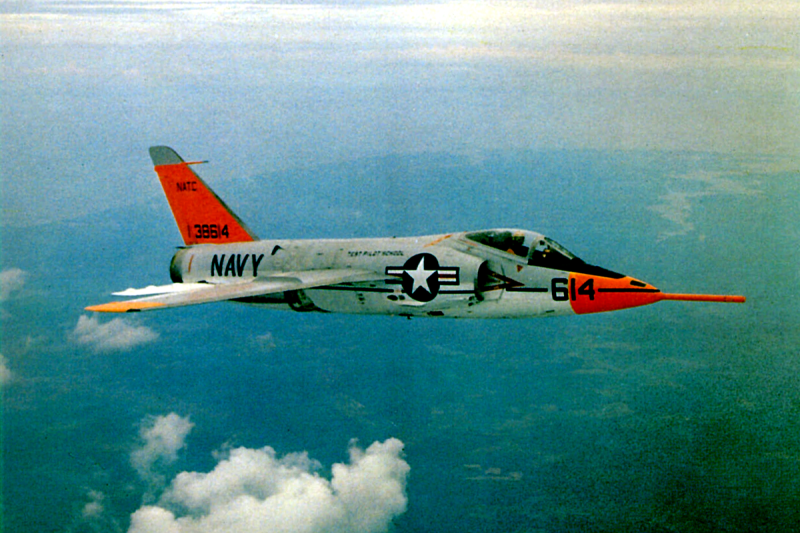
We take shortcuts all the time with our physical models. We rarely consider that wire has any resistance, for example, or that batteries have a source impedance. That’s fine up until the point that it isn’t. Take the case of the Navy’s Grumman F11F Tiger aircraft. The supersonic aircraft was impressive, although it suffered from some fatal flaws. But it also has the distinction of being the first plane ever to shoot itself down.
So here’s the simple math. A plane traveling Mach 1 is moving about 1,200 km/h — the exact number depends on a few things like your altitude and the humidity. Let’s say about 333 m/s. Bullets from a 20 mm gun, on the other hand, move at more than 1000 m/second. So when the bullet leaves the plane it would take the plane over three seconds to catch up with it, by which time it has moved ever further away, right?
Who Shot You Down?
No. In 1956, Tom Attridge took off from Long Island to do a weapons test over the Atlantic. He climbed to 20,000 feet, started a Mach 1 dive, and fired his cannons which ran out of ammo at about 13,000 feet.
Around the 7,000-foot mark, something hit his windshield — presumably a bird. The plane started losing power and the plane crashed leaving a 300-foot flaming path through a wooded area near the airstrip. Attridge survived but had a broken leg and broken vertebra.
But it wasn’t a bird that hit the naval aviator’s plane. It was his own bullets. The problem is, the bullet did leave the gun at a high rate of speed. However, they immediately encountered air resistance causing them to slow down. By the time the bullets slowed to 643 m/s, the plane was going at 1,400 m/s. Three bullets hit the plane, one through the nose cone, one through the windshield, and one hit the starboard engine intake. All this took a mere 11 seconds. You can see the whole story in the video, below.
The plane proved to be less reliable compared to other contemporary fighter planes. It had other undesirable characteristics, but it was used as a training aircraft and the Blue Angels used them until 1968.
Lesson Learned?
You would think this was ample evidence that something was wrong, but no. It was dismissed as a “fluke.” Of course, in 1973, an F-14 Tomcat also shot itself down with a dummy missile. A Dutch F-16 also shot itself down in 2019 in a very similar incident. You have to wonder if there aren’t other examples that went unreported.
However, there is a lesson here. Common sense isn’t always engineering sense. Think a two-micron deviation isn’t important? Think again. Or maybe you want to check for air leaks using a candle in a nuclear power plant? Engineering history is full of stories where any reasonable person would think something was fine, when, in retrospect, it was anything but.
There’s an old Russian saying “trust but verify.” That is a good adage for us, too. Trust your instincts, but verify with solid mathematical models that take everything into account.
0 Commentaires